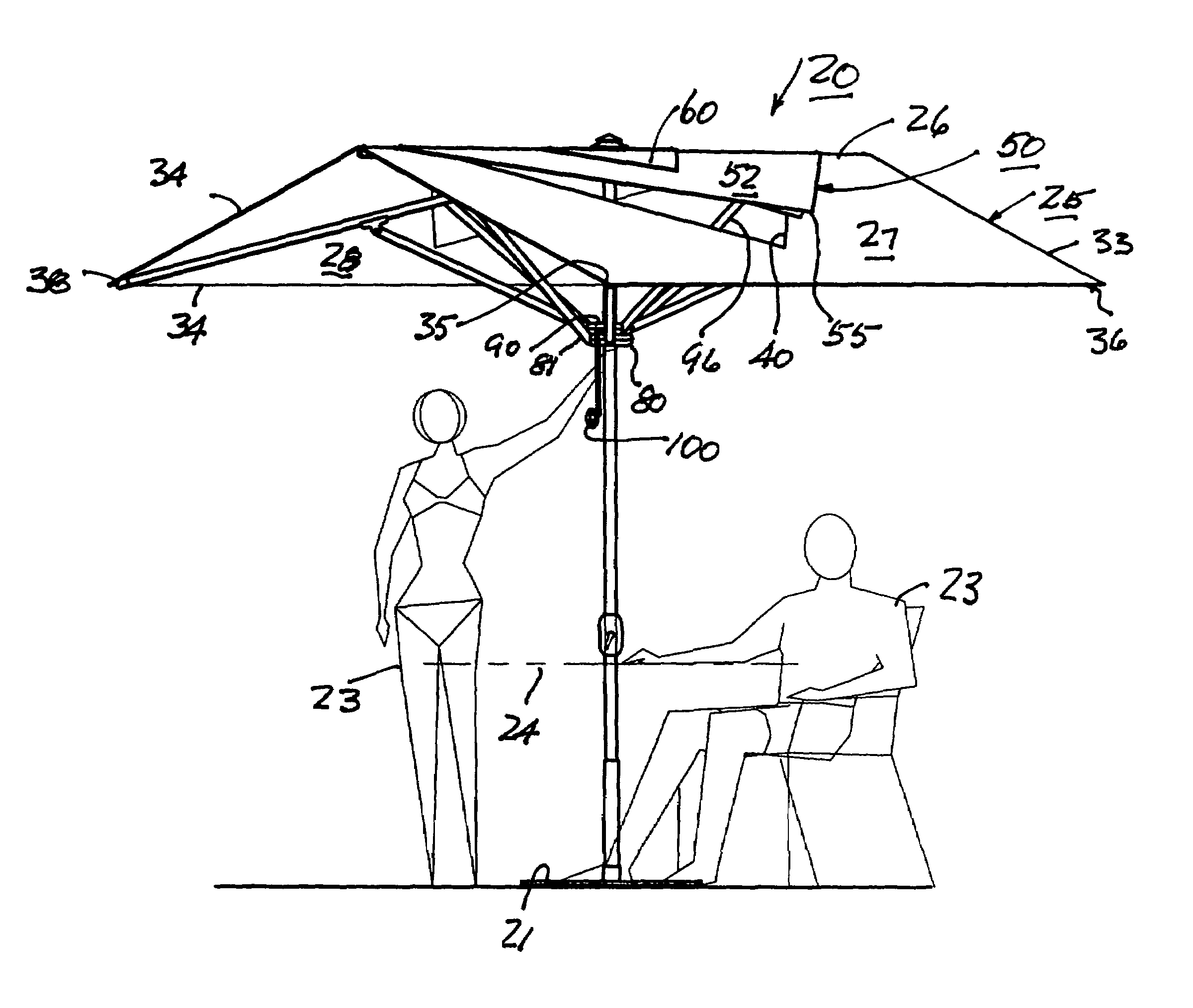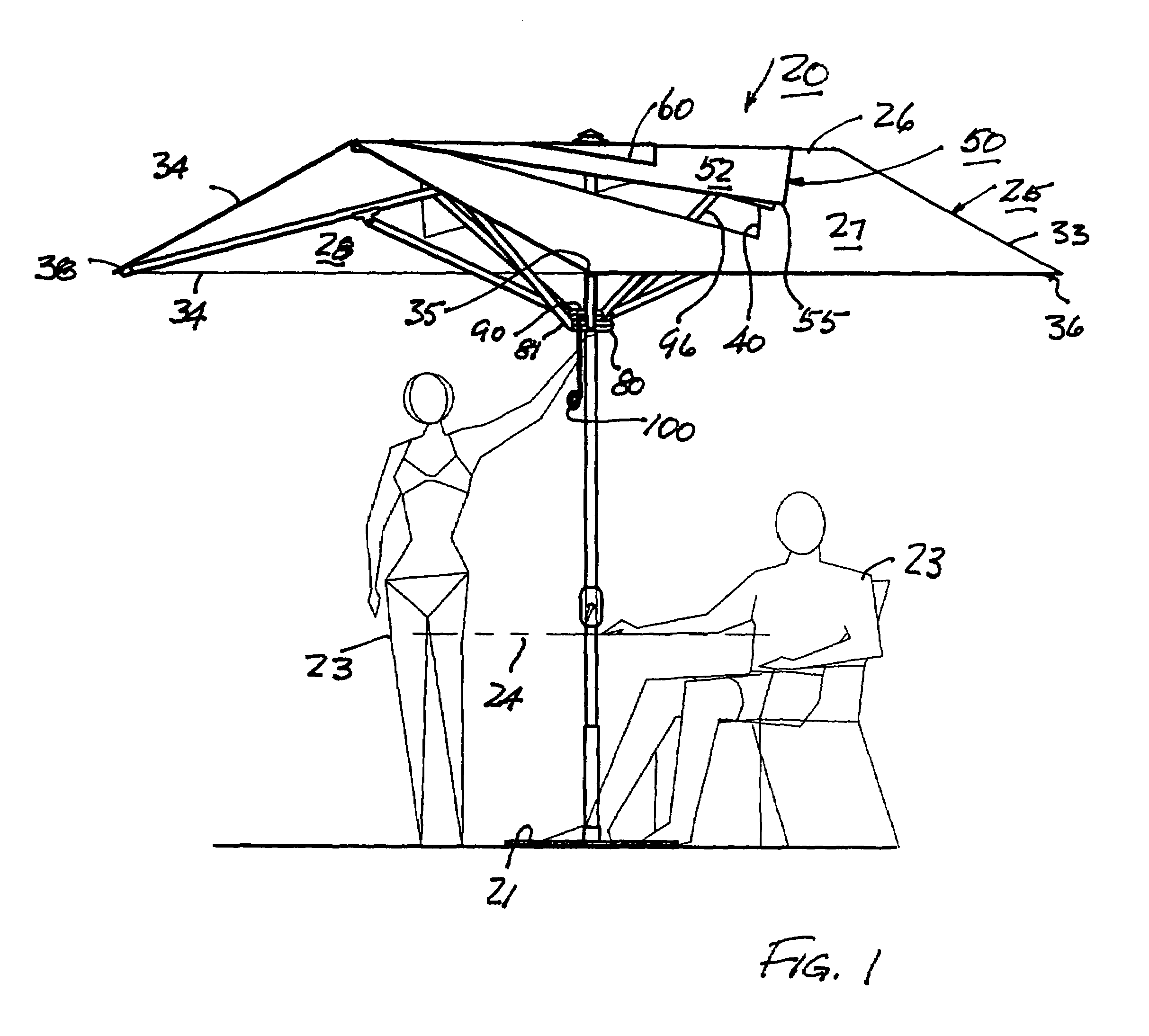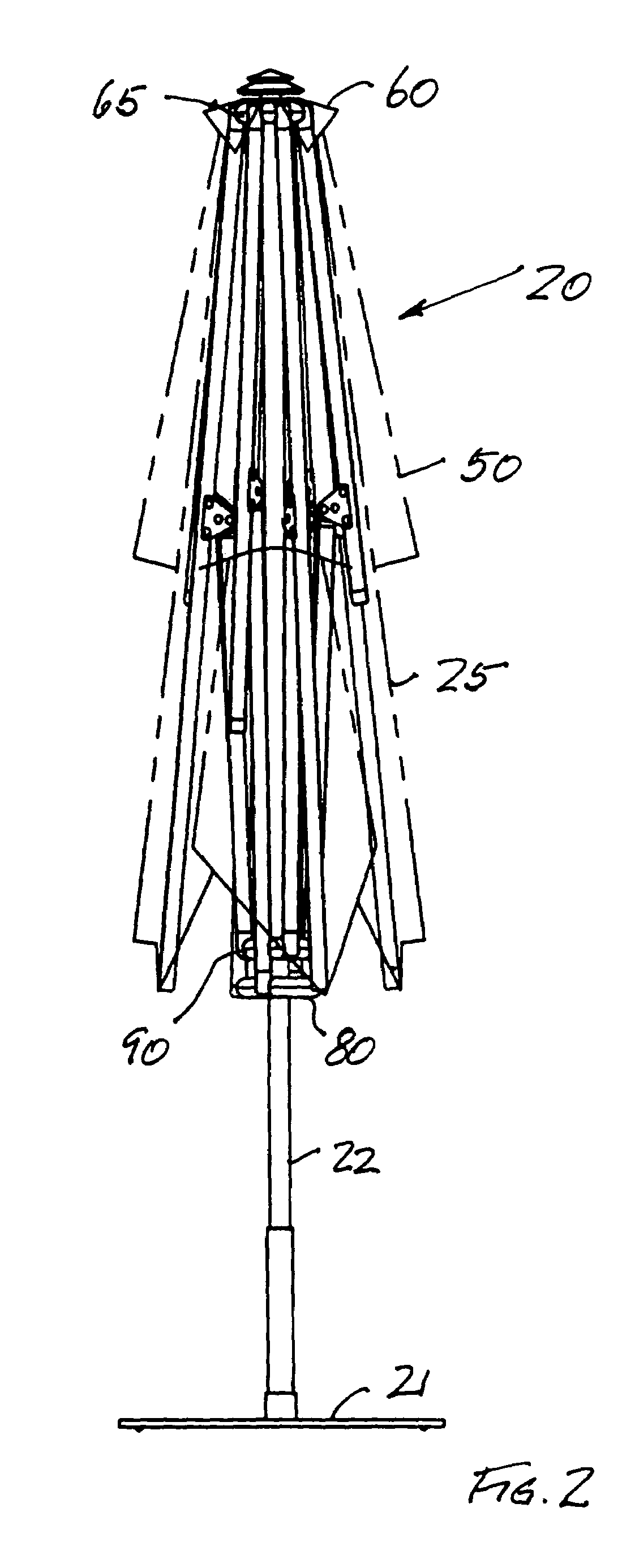Umbrella with a vented canopy deployable and retractible to a dihedral shape with a positively moved canopy and vent cover
a vent cover and umbrella technology, applied in tents/canopies, building types, constructions, etc., can solve problems such as substantial wind loads
- Summary
- Abstract
- Description
- Claims
- Application Information
AI Technical Summary
Benefits of technology
Problems solved by technology
Method used
Image
Examples
Embodiment Construction
[0020]FIG. 1 shows the preferred embodiment of this invention in its most frequently deployed position. An umbrella 20 is mounted to a stand 21 to support a central pole 22 with the axis in an upright position. Instead of a stand, sockets or other types of support can as readily be used. Persons 23 and objects such as tables and chairs can conveniently be sheltered under the umbrella. A table 24 is suggested by a broken line in FIG. 1.
[0021]As shown in FIG. 1, the umbrella includes a canopy 25 which is preferably rectangular so that when deployed it will form a dihedral angle with a ridge 26 (more properly, an “edge” of a dihedral) with a pair of rectangular faces 27, 28. It is a feature of this invention that the dihedral angle between the faces can be adjusted, even to the extent that it is 180 degrees (a flat plane). More usually the dihedral will be on the value of about 120 degrees.
[0022]It is of interest that with this rectangular arrangement, a 9 foot by 9 foot square umbrell...
PUM
 Login to View More
Login to View More Abstract
Description
Claims
Application Information
 Login to View More
Login to View More - R&D
- Intellectual Property
- Life Sciences
- Materials
- Tech Scout
- Unparalleled Data Quality
- Higher Quality Content
- 60% Fewer Hallucinations
Browse by: Latest US Patents, China's latest patents, Technical Efficacy Thesaurus, Application Domain, Technology Topic, Popular Technical Reports.
© 2025 PatSnap. All rights reserved.Legal|Privacy policy|Modern Slavery Act Transparency Statement|Sitemap|About US| Contact US: help@patsnap.com



